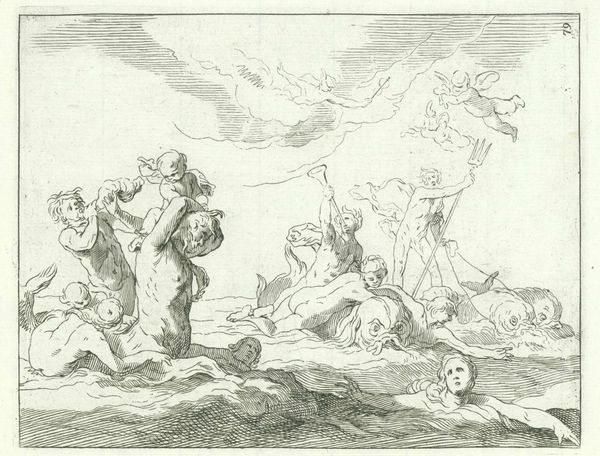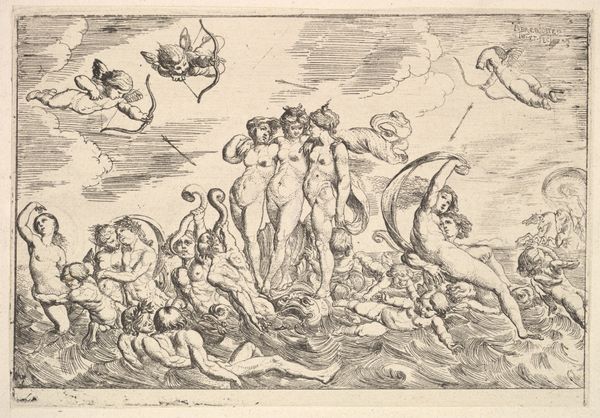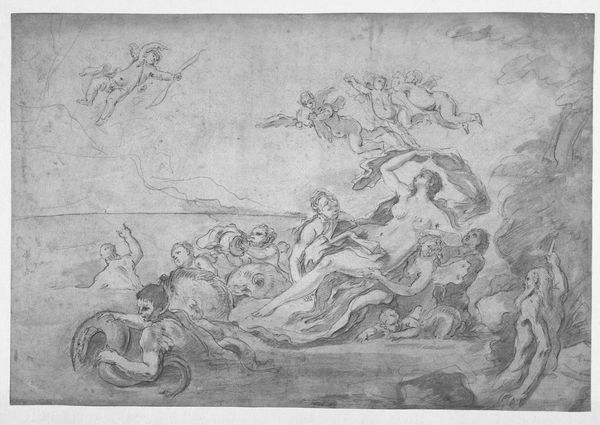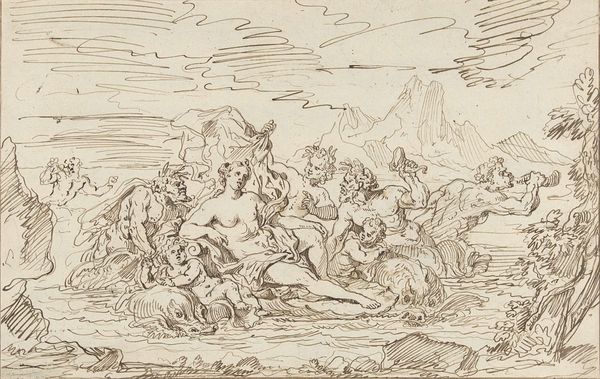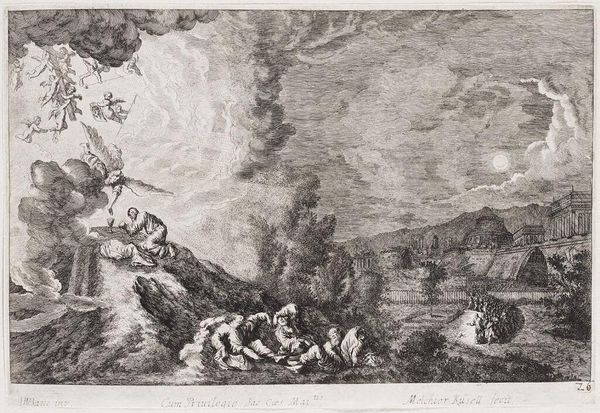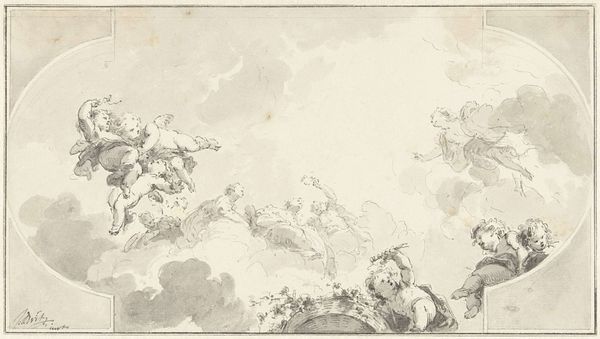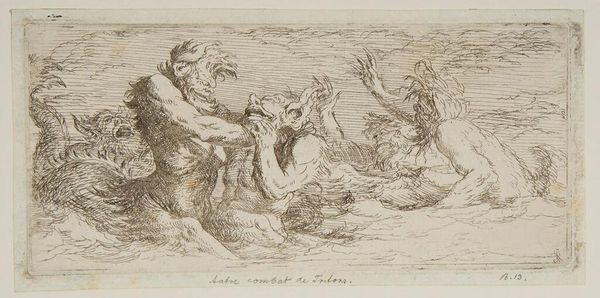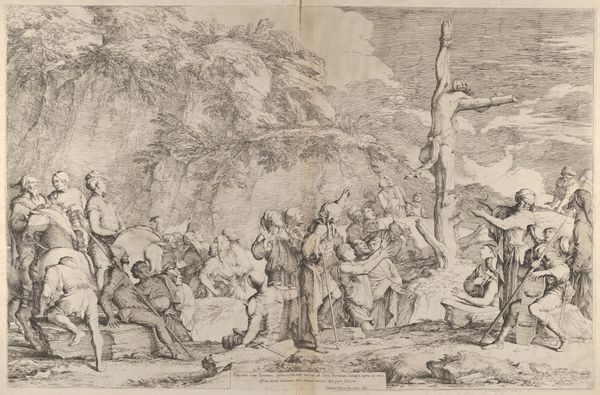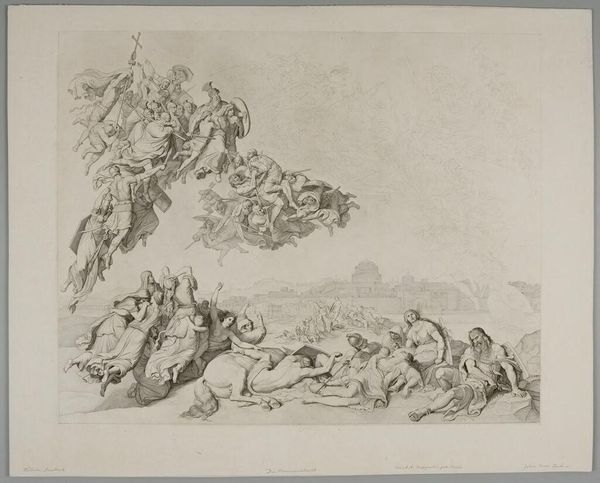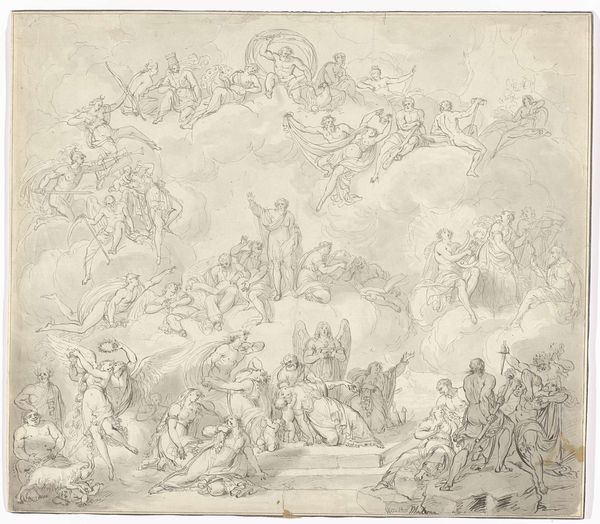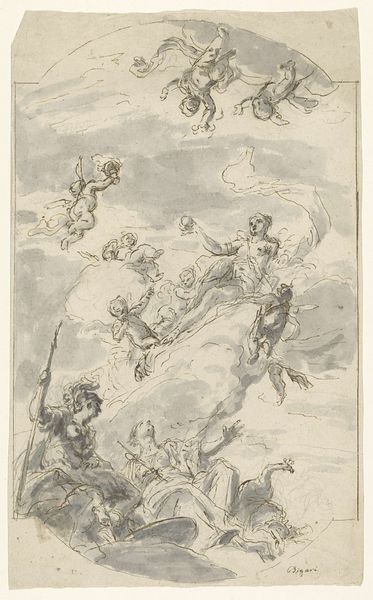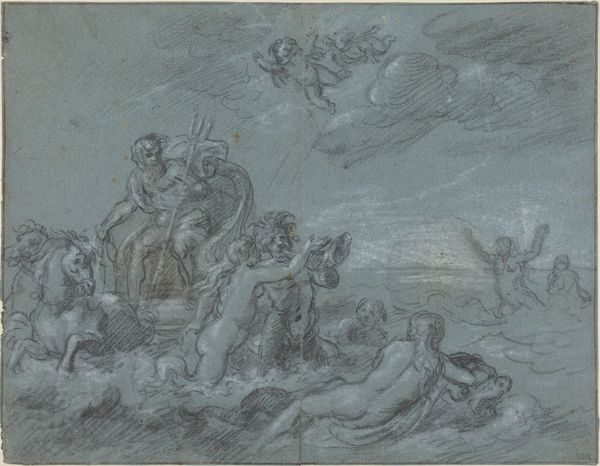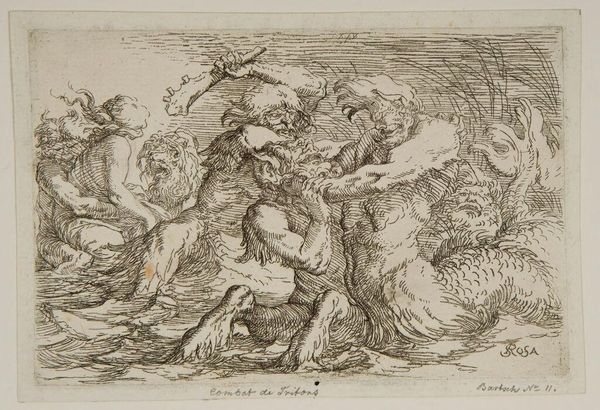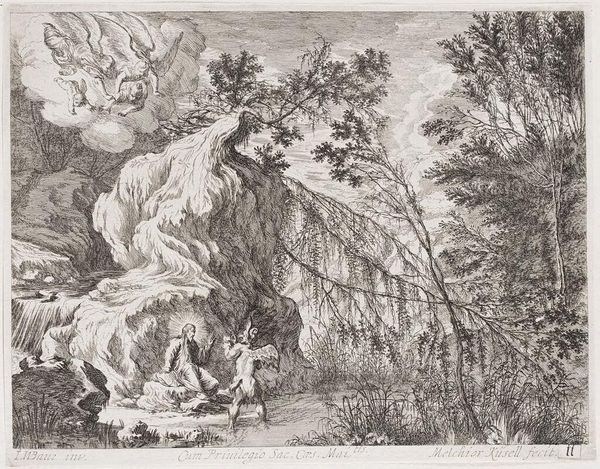
The Realm of Neptune, from Drawing Book 1650 - 1656
0:00
0:00
drawing, print, ink, engraving
#
drawing
#
ink drawing
#
baroque
# print
#
pen illustration
#
pen sketch
#
pencil sketch
#
landscape
#
figuration
#
ink
#
history-painting
#
engraving
Dimensions: sheet: 5 15/16 x 9 5/8 in. (15.1 x 24.4 cm)
Copyright: Public Domain
Curator: What strikes me first is the dynamic composition of this ink drawing. A sense of chaotic joy pervades it, even if some figures seem to struggle against the waves. Editor: Indeed. We're looking at "The Realm of Neptune," a print from Frederick Bloemaert's Drawing Book, dating from about 1650 to 1656. It currently resides here at the Metropolitan Museum of Art. Bloemaert was working firmly within the Baroque tradition here. Curator: Yes, Baroque art loved theatricality. Neptune's triumphant pose, trident in hand, practically declares his dominance, a symbol of absolute authority extending to the very oceans. Editor: And beyond simple dominance, we must consider the politics of representation. How does this idealized portrayal of power align with the socio-political realities of 17th-century Europe, with its own maritime empires and power struggles? Who does this imagery serve? Curator: I am intrigued by how Neptune here echoes earlier artistic depictions of Zeus. Bloemaert’s use of light and shadow to emphasize the figures’ musculature feels like an ode to classical sculptures. The cherubs floating above further solidify Neptune’s godly status. These recurring motifs reflect an almost hard-wired need for human figures to claim symbolic links to divine origins. Editor: That’s precisely what makes it so compelling. Art like this wasn’t created in a vacuum. Bloemaert was probably looking at prints by the Sadeler family and Cornelis Cort as examples. These depictions had power within the social institutions. They justified privilege. Curator: What this work truly underscores for me is how art continually resurrects and reshapes established visual motifs to affirm our understanding of the world around us and within. This is not just decoration; it's cultural memory made tangible. Editor: For me, understanding how this print participated in constructing ideas about power and the sea—that makes the print come alive today. Thank you for illuminating the imagery!
Comments
No comments
Be the first to comment and join the conversation on the ultimate creative platform.
